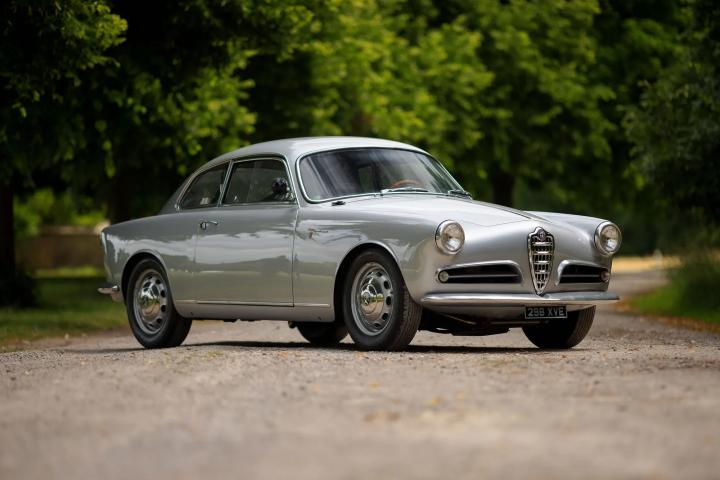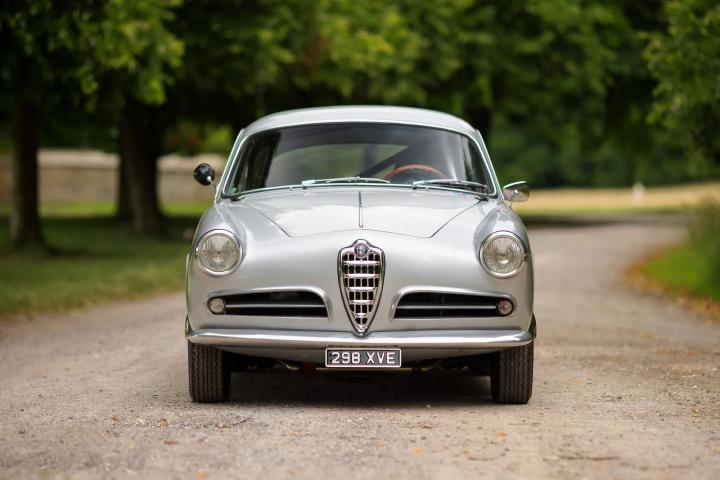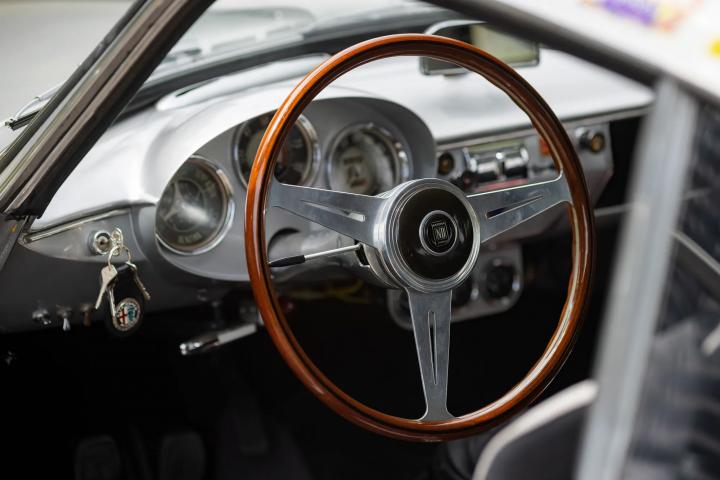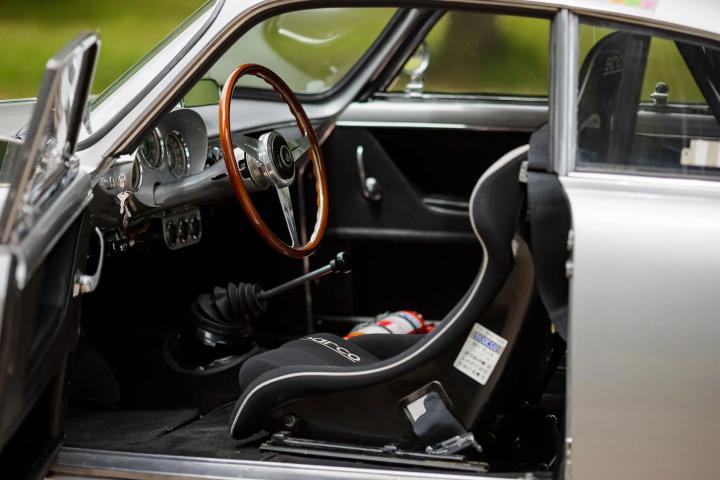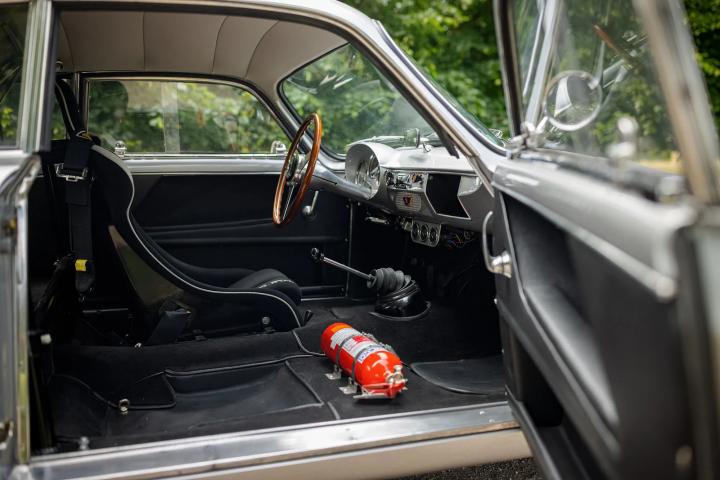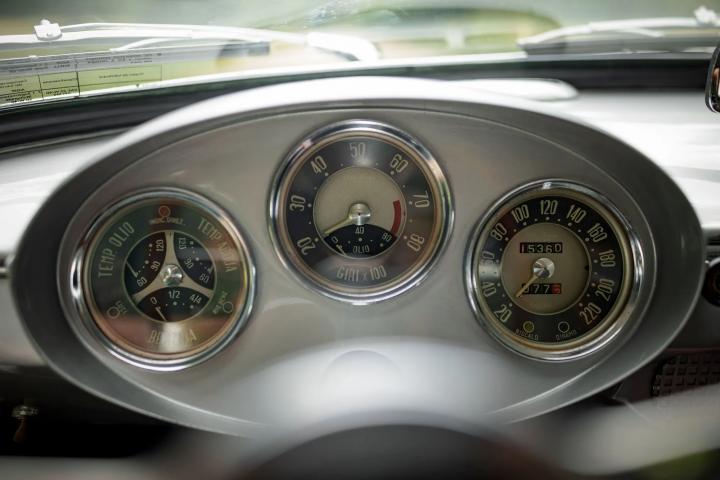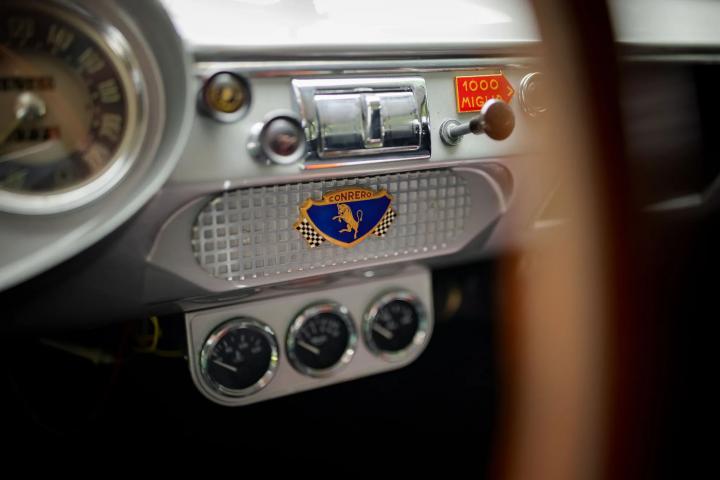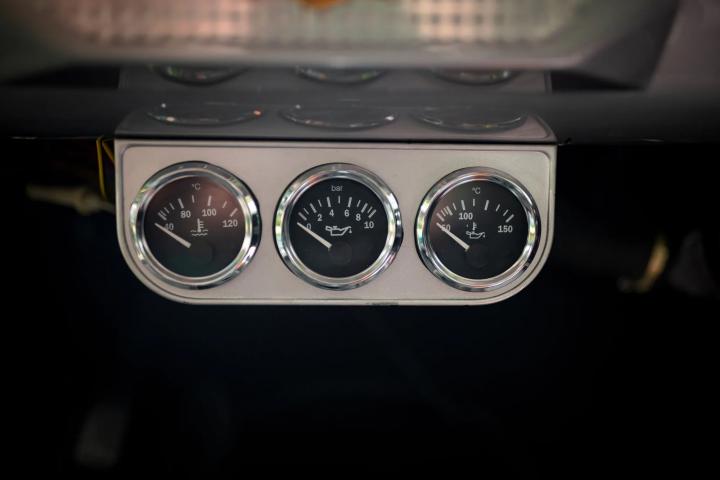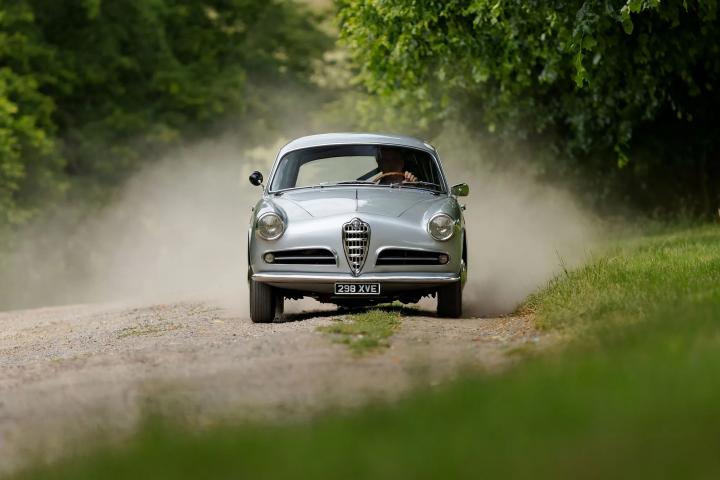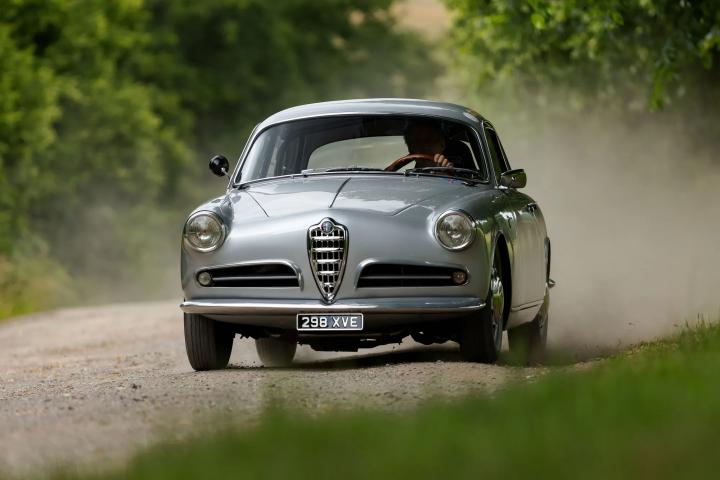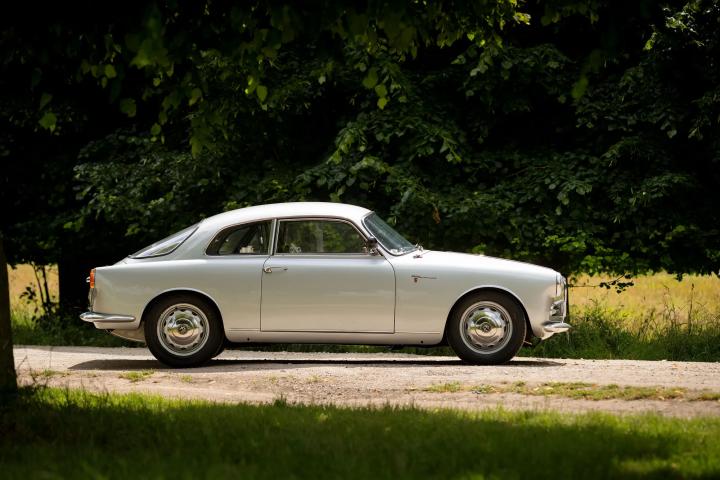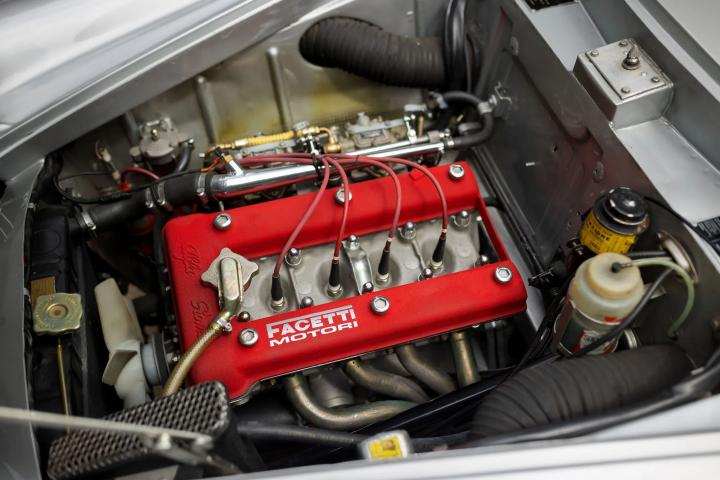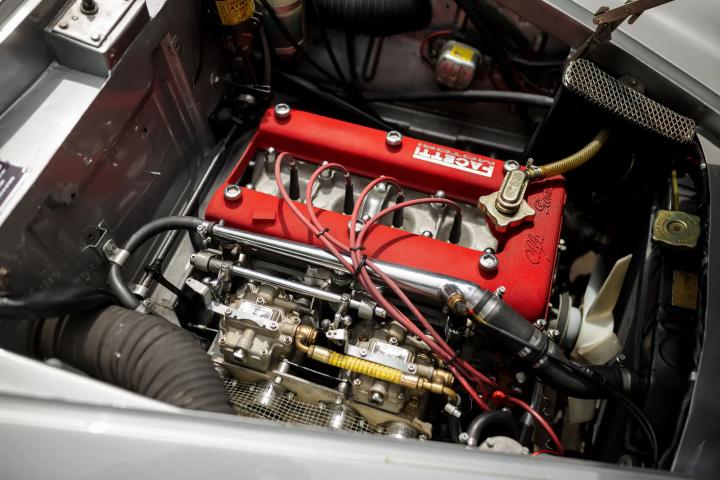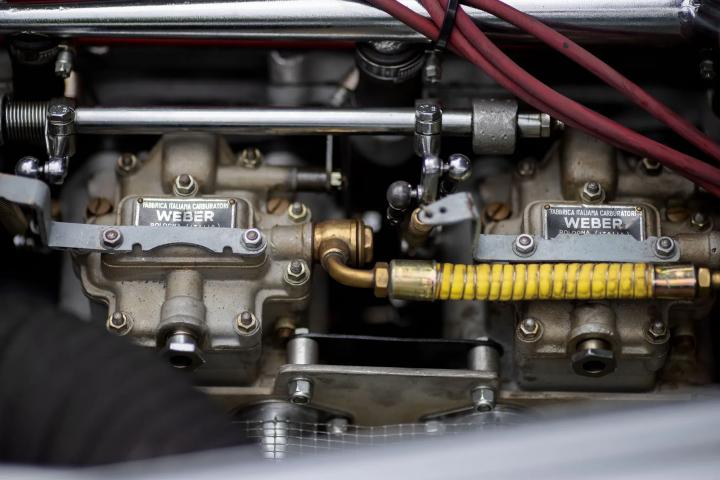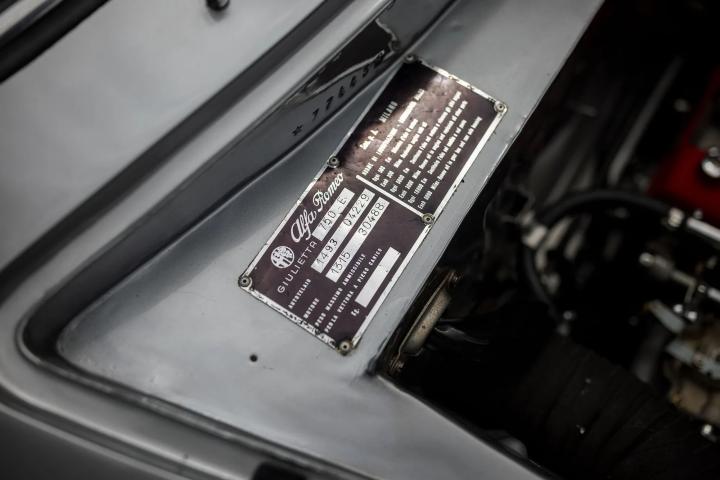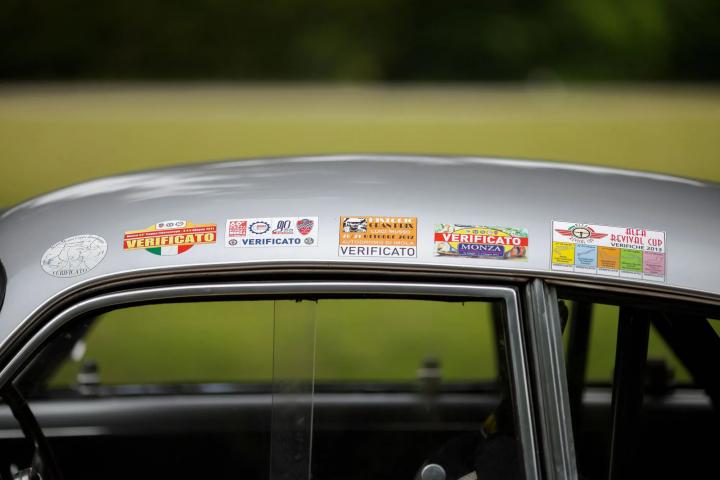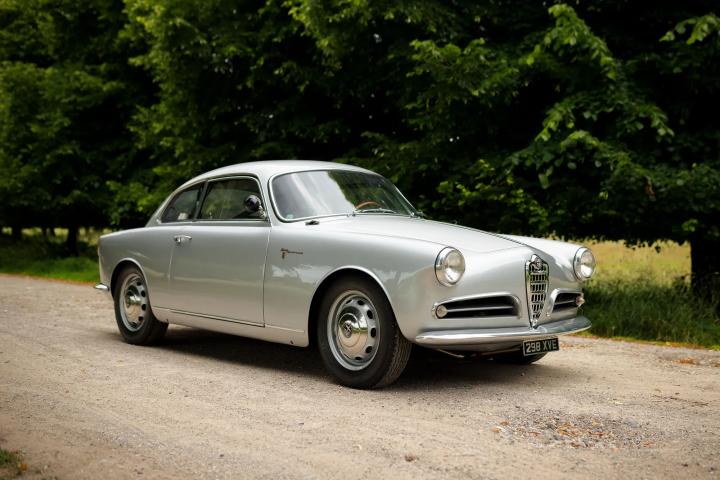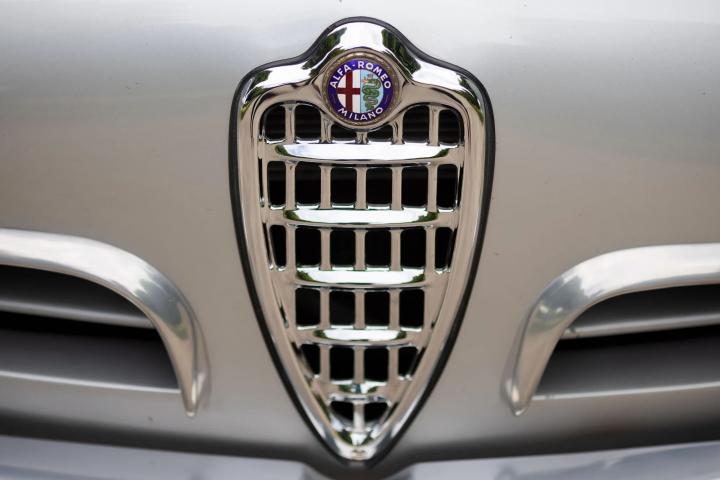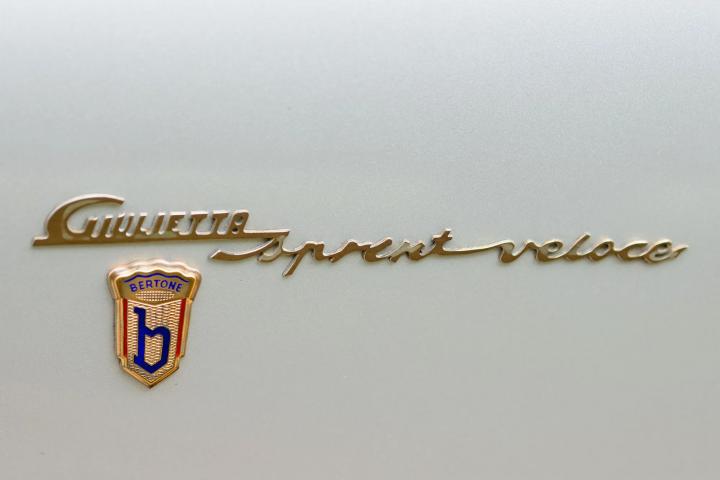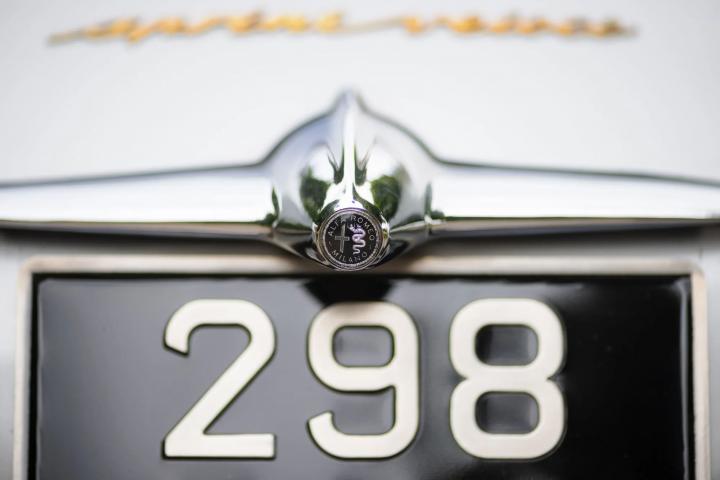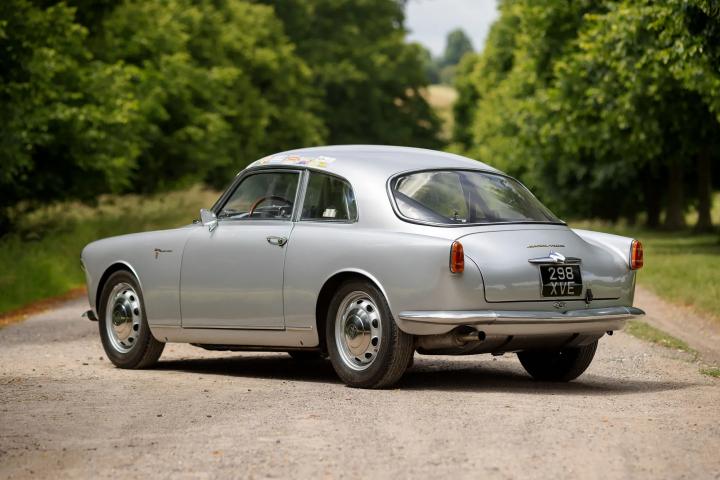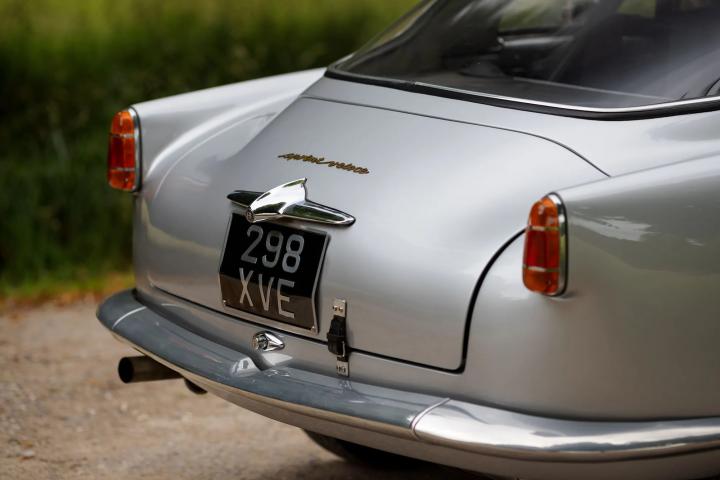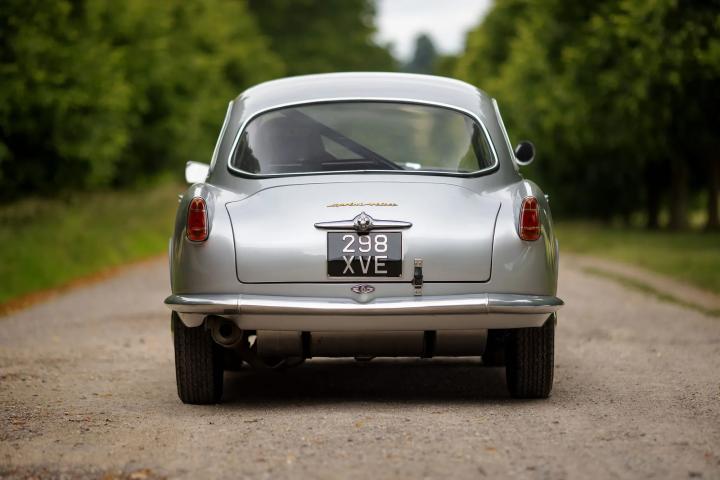The Alfa, in a few words then, is a small car with a rev-happy DOHC engine that can carry two
people from point A to point B over all types of roads quicker than most cars twice its size. It
does this not with blinding speed but with a wonderful combination of roadholding, compact
size and sheer willingness.' – Car & Driver on the Giulietta Sprint.
With the introduction of the Bertone-styled Giulietta Sprint Coupé, Alfa Romeo established the
'small car, big performance' formula that would characterise the Milanese marque's finest
offerings from then on. First of the Giuliettas, the Sprint debuted at the Turin Motor Show in
April 1954 powered by a 1.3-litre, all-alloy version of Alfa's classic twin-cam four designed by
one-time Ferrari engineer Giuseppe Busso. The Sprint Coupé was soon joined by Berlina and
Spider versions, the latter styled by Pinin Farina and built on a slightly shorter wheelbase.
Right from the start, the Giulietta Sprint Coupé was appreciated by drivers who recognised its
potential for competition success. With its independent front suspension, very well-located live
rear axle, and coil springs/hydraulic dampers all round, the unitary-construction Giulietta's
chassis was superior to that of most sports cars. Only the handicaps of relatively low power and
excess weight (64bhp/880kg) held it back, prompting Alfa Romeo to introduce a more powerful
version: the Giulietta Sprint Veloce.
For the Veloce engine, the inlet ports were enlarged and the single Solex carburettor replaced
with two twin-choke Weber 40 DCO3 instruments, effectively providing each cylinder with its
own carburettor. In addition, the valves were enlarged, the compression ratio increased (from
8:1 to 9:1), the camshafts changed, a more free-flowing exhaust system fitted, and the engine
balanced, the result being an increase in maximum power for 64 to 89bhp at slightly higher revs.
In actual fact, most engines exceeded this figure, with the best having around 99bhp on tap – 89
horsepower being in effect the minimum guaranteed. The inlet manifold and oil sump were
made of magnesium.
At the same time, the Giulietta Veloce's weight was significantly reduced. Bertone used thinner
steel for the non-load-bearing body panels; insulation was removed; the doors, bonnet and boot
lid made of aluminium; and the side and rear window made of Plexiglas. Aluminium was also
used for items such as the bumpers, 'eyebrows', 'whiskers', and headlight rims.
The side windows' heavy winding mechanisms were deleted and replaced with sliding windows
with aluminium frames. The doors weighed only 7kg (with foam padded armrests) and could be
ordered with nets for containing small items. There was no glove department cover, no sun
visors, and no rear seat. The Veloce seats were thinner, albeit foam-padded, and mounted on a
delicate tubular frame.
As a result, the 770kg Veloce enjoyed a 110kg (15%) weight advantage over the standard Sprint
Coupé, and that with a 65-litre fuel tank instead of the normal 53-litre tank (an 80-litre tank was
available for endurance racing). With this greatly improved power-to-weight ratio, the Veloce
would turn out to be a formidable competitor.
The Giulietta Sprint Veloce debuted at the Turin Motor Show in April 1956, this being the first
occasion that the 'Veloce' (fast) designation was used by Alfa Romeo. Advertised by its maker
under the tag line 'Only the best is good enough', the Veloce competed two days later in the
Coppa della Consume, securing a class win. There was more success the following week at the
23rd Mille Miglia; on this occasion the Giulietta Veloce's superiority proved overwhelming,
examples filling the first six places in the 1,300cc class with a best overall position of 11th.
Further class victories were achieved in the Nürburgring 1,000km, Coppa Dolimiti and Tour de
France, with the Alpine Rally won outright. The following year, of the 43 cars entered in the Mille
Miglia's 1,300cc category, 43 were Alfa Romeo Giuliettas.
These early Giulietta Sprint Veloces, with Bertone body numbers commencing '77', are now
commonly known as 'alleggerita' (lightened or lightweight) cars. They differ considerably from
the 'normal' Sprint and were built in limited numbers.
Chassis number AR1493 E 04229 originally corresponds to an Alfa Romeo Giulietta Sprint
Veloce Alleggerita, manufactured on the 12th April 1957 and sold on the 14th May 1957 in
Lucca, to Sig. Benito D'Ulivo of Milano who retained the car until 1974 when it was passed to its
second owner in Milano a Sig. Alessandro Frova. Remaining in original condition Sig. Frova kept
his Alleggerita until May 1983 when it was sold to a German gentleman. Herr. Dammler of
Osnabrück, who kept the car until 2003 when it was purchased by one of the proprietors of the
German classic car parts specialist OKP who commissioned Dutch Alfa Romeo Specialist Jan
Steutel to carry out a full restoration and rebuild to historic racing FIA appendix K specification.
This restoration commenced in 2003 and was completed in 2006.
In 2010 OKP entered into a collaboration agreement with Facetti Motori the legendary family
engineering firm established by racing driver and ex Autodelta engineer Carlo Facetti. As a
result of this collaboration, in 2011 the original engine was rebuilt and prepared by Facetti to
achieve 130bhp an increase of 40bhp on the ’standard’ Veloce motor. Mated to this is a
four-speed gearbox with a longer first gear and shortened second, third and forth built by Oliver
Vetter of H & O Vetter Garage in Switzerland and a fully overhauled 8:41 differential which has
been used in just one race. In addition to this #04229 has an 80 litre aluminium Veloce fuel tank,
racing clutch and external oil cooler. The result is a quick, period competition vehicle.
Currently fitted with Alleggerita interior trim with a single race seat fitted and roll cage, it is track
ready. Alternatively, we also have a correct pair of seat frames that could be fitted to return the
interior to original specification. Externally the car has all the correct Alleggerita aluminium body
panels - bonnet, doors and boot lid as well as trim in place - bumpers, window furniture, grill
eyebrows and headlight rings.
Presented in a very appealing condition throughout, this Giulietta Sprint Veloce represents a
wonderful opportunity to acquire one of the very rare, early lightweight models possessing
known history. It is, of course, eligible for participation in many of the most prestigious historic
motor sports events including the Mille Miglia.
